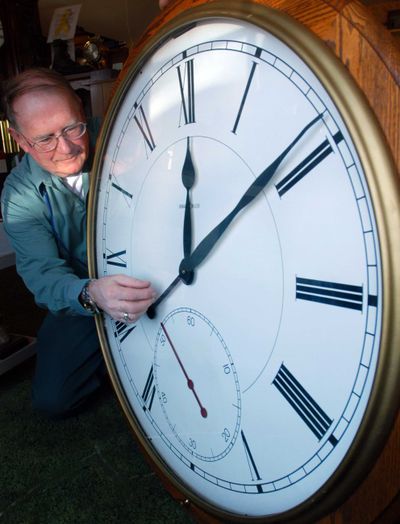Spring ahead, remain sharp
Daylight saving time doesn’t have to bring on sluggishness

It’s an annoying ritual to some: Clocks go back in the fall and ahead for spring.
Why do we do it, when did it start and how does it affect our lives?
Some answers before Sunday robs us of an hour of sleep.
2 a.m. – really?
Yeah, yeah, we understand that time shifting began as a way to conserve energy, but why is the middle of the night official clock-tweaking time? It’s not like anybody sets an alarm to wake up so they can fix the clock and go back to sleep.
Jeanna Bryner, managing editor of Livescience.com, says the federal government wanted people to be safely at home for the switch – and bars and restaurants to be closed.
“They also didn’t want early shift workers and churchgoers to be impacted,” she says. “And they didn’t want it to change the day back to the day before, like if you did it at midnight and it became 11 p.m.”
Who thought it up?
In 1784, Benjamin Franklin lightheartedly suggested the idea to a Paris newspaper to conserve candles.
In Britain, builder William Willett, who adored early morning horseback rides, began fighting for it in 1905 but died before his efforts were rewarded, wrote David Prerau in his book “Seize the Day: The Curious and Contentious Story of Daylight Saving Time.”
Germany was the first to introduce it, during World War I. Britain and the United States followed. Now, about 70 countries have some form of it, covering more than 1 billion people.
When is it, again?
After World War I, daylight saving was left up to local governments. It was reimposed nationwide to conserve energy during World War II and lifted again after the war ended in 1945.
Without a federal mandate, chaos ensued. In Iowa alone, 23 different pairs of start and end dates were used in cities and towns around the state.
“On one West Virginia bus route, passengers had to change their watches seven times in 35 miles,” Prerau wrote.
“The situation led to millions of dollars of costs to several industries, especially transportation and communications. Extra railroad timetables alone cost the equivalent today of over $12 million per year.”
Today, the U.S. government doesn’t require that states mandate daylight saving but does demand those on board do it at the same time on the clock and for the same stretch of the year.
Daylight saving begins on the second Sunday in March and ends on the first Sunday in November, when clocks are turned back an hour.
Arizona and Hawaii are the only states not to bother. “They have lots of light,” Bryner says.
Time confusion reigned in Indiana for years, until statewide daylight saving was imposed by Gov. Mitch Daniels in 2008.
For the record: Clocks spring ahead before spring, which doesn’t officially begin until March 20.
Sleep adjustments
If daylight saving sends you into a jet-laggy tailspin, Bryner suggests hitting the sack 15 minutes earlier and waking up 15 minutes earlier for three nights in advance. If you’re lucky, your pets will follow your lead.
“You’re getting your body ready for the full hour,” she says. “Experts say not to sleep late that Sunday. Set an alarm if you have to.”
Sleep experts estimate millions of people are affected – however temporarily – by the return of daylight saving each spring. If the change proves troublesome long term, avoid reading, eating or watching TV in bed.
Still awake? Go for complete quiet and darkness, and a slightly cooler temperature in the room.
Dealing with pets
“They’ll probably need some paw-holding,” says Bryner.
Though animals do have circadian rhythms of their own, guided by light as humans are, “we’ve become their biological time keepers in a way,” she says.
Science has found that pets, like some children, might need a few days to get used to the time shift.
“They’ll follow your schedule, so plan in advance,” Bryner says.
Adjust their walking and meal schedules a bit at a time before the time change.
Let there be light
“Light is the primary cue for our circadian rhythms,” Bryner says. “It tells us when to wake up and when to go to sleep.”
It’s also great for the bones, supplying vitamin D. A lack of light has been linked to seasonal affective disorder, a type of depression that touches 1 percent to 10 percent of the population, primarily in the winter months, according to research.
“At least one study found that light can boost a man’s testosterone,” Bryner says, citing work published last year in the Journal of Critical Endocrinology.
The study, she says, found men who had more vitamin D had more sex hormones.
“The caveat,” Bryner warns, “is that it’s one study.”